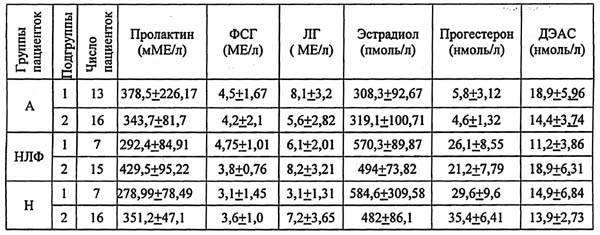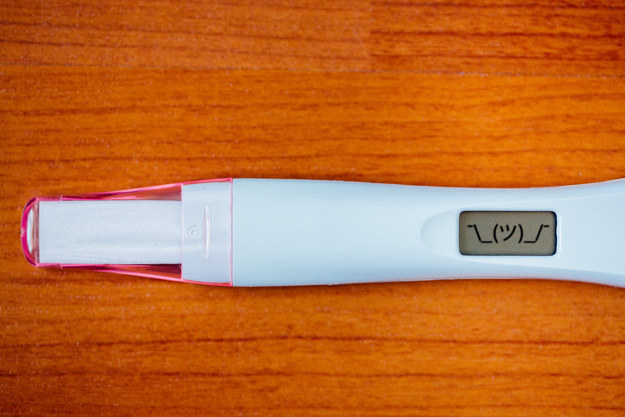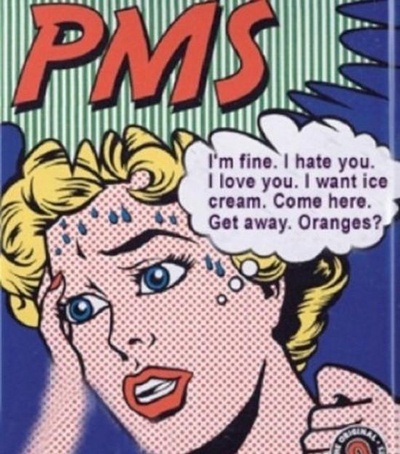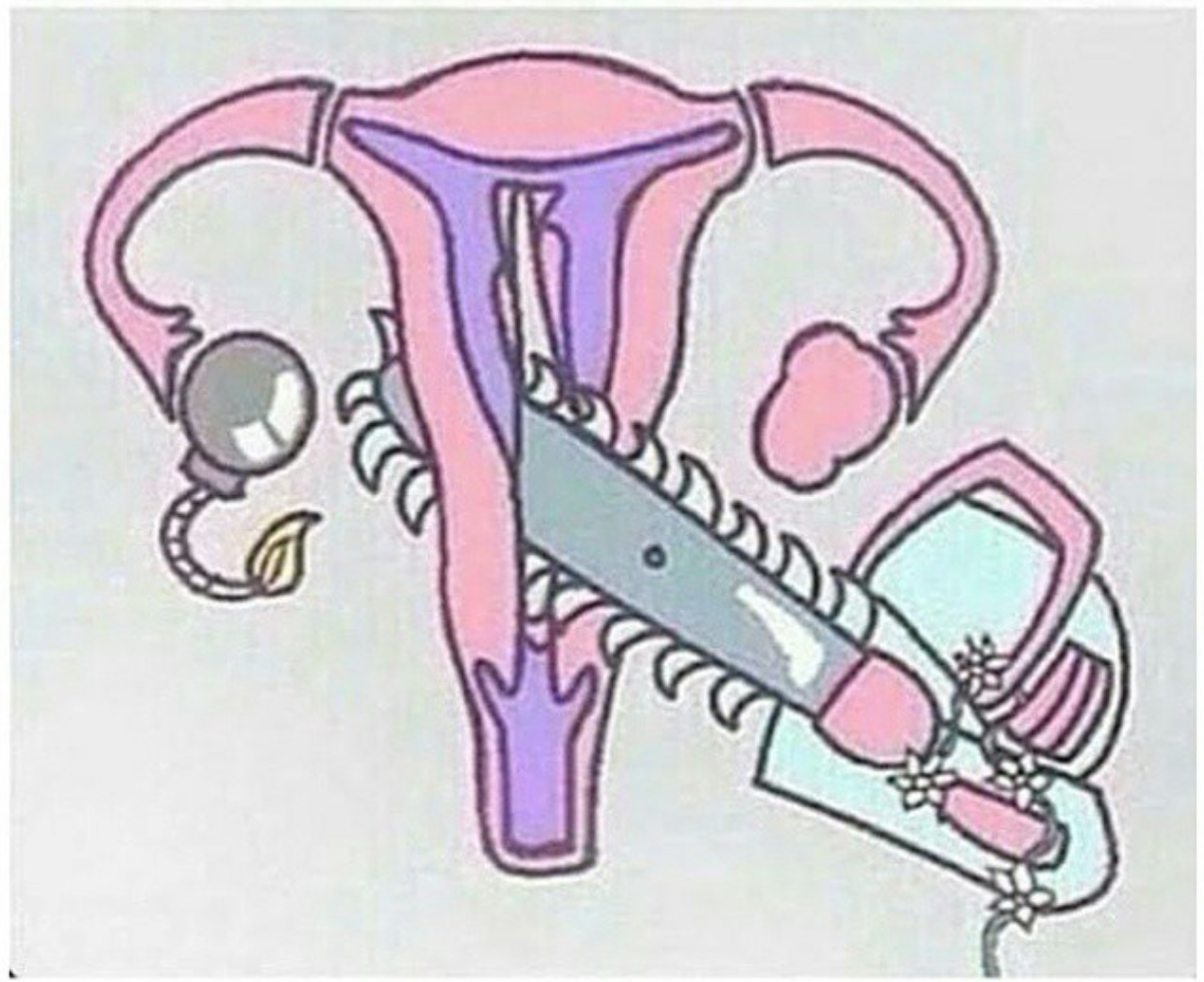When pregnancy occurs after menstruation. Hormones during menstruation
Most reactions in the body go with the participation of hormones. And is no exception. The volume of these substances in the blood is not the same at each of its stages, but must have certain values. Control over them is important, because hormones during menstruation affect not only reproductive capabilities, but also the general condition of the female genital area, as well as psychological. An imbalance of these substances can cause many diseases. various organs and systems.
Hormones enter the blood through the endocrine glands. It is worth saying that the balance of these active substances depends on the age of the woman, the stage menstrual cycle, general health criteria. The picture of the background of a teenage girl should normally differ from that of 45-year-olds.
The reproductive function of a woman is provided by a system that includes the hypothalamus, pituitary gland and ovaries. The first part of it is located in the brain and produces hormones designed to control the endocrine glands. The hypothalamus is located in close proximity to the pituitary gland and already controls its functioning, producing liberins and statins. The former stimulate the production of the necessary hormones, the latter inhibit it when necessary. But the hypothalamus does not release liberins and statins arbitrarily; in order to maintain a balance between stimulating and inhibiting the production of active substances, it receives information from all parts of the body.
This makes the hormone system very complex. Violations in any of its sections respond to the functioning of all the others. And a malfunction, for example, of the thyroid gland will entail the same in the female reproductive system.
Hormones throughout the cycle
Hormone levels and menstruation have a direct relationship. The main ones are follicle-stimulating and luteinizing. Both are produced by the pituitary gland, causing the ovaries to produce other substances - estrogen and progesterone. The latter push the uterus and mammary glands to prepare for the likely fertilization and subsequent development of the embryo.
The menstrual cycle is divided into three stages:
- Follicular, which exists before the release of the egg;
- , characterized by its aging;
- Luteal, which occurs after the release of the egg.
Follicular stage
It is calculated from the first day of menstruation. It is during this period of time that the uterine cavity is released from the upper layer of the endometrium and the dominant follicle is isolated. At the beginning of the stage, the lining of the uterus is full of blood vessels and nutrients intended for the embryo. female hormones in menstruation at this stage, the growth of the endometrium, thickening and removal to the outside are determined. By this time, estrogen and progesterone are reduced to their lowest values, due to which its upper layer is rejected.
At the same time, the level of follicle-stimulating hormone rises. With full health, its quantity and the size of the cavity, in which the egg then matures, increase throughout the initial phase of the cycle. Both the size of FSH and the follicle acquire the greatest value two weeks after the first day of menstruation. The latter produces a large amount of estrogen, which stimulates the development of cells of a new layer of the endometrium. The follicular stage is the longest in the cycle. In short, he becomes as the woman approaches.
Despite the increased size of the follicle, it has not yet exited the ovary. For this to happen, luteinizing hormone must enter the process.
ovulatory stage
The maturation of the egg is accompanied by an increased level of LH. It is he who adjusts the divergence of the follicle shell and its exit. In time, ovulation takes from 16 to 32 hours and ends with the release of the egg. Even after that, in the course of 12-24 hours, the amount of LH is greater than ever. It makes fertilization more likely in the presence of sperm. A similar effect of hormones on menstruation ensures childbearing.
luteal stage
Its countdown is calculated after ovulation, the stage lasts approximately 14 days. The final one is the last before the next menstruation. At the beginning of the luteal period, the bursting follicle closes, thus forming the corpus luteum, that is, a set of cells that produce progesterone. The task of these hormones during menstruation is to prepare the uterus for the probable attachment of the fetal egg to its wall. It is he who causes the growth of the endometrium, the accumulation of nutrients by it. Thanks to him, the figure rises if conception has happened. Progesterone, as well as estrogen, also prepare the breast for the future feeding of the baby, expanding the ducts of the mammary glands. From this, before menstruation, she becomes more sensitive to soreness.
In the absence of fertilization, the corpus luteum disappears 13-14 days after ovulation. That is, hormones before menstruation quantitatively decrease. So the body approaches another menstrual cycle, saving resources, preparing for a new probable attempt to fertilize the egg.
If conception happened, another hormone comes into play - chorionic gonadotropin person. It is he who is an undoubted criterion of pregnancy, because only the fetal membrane is capable of producing it.
The only group of active substances that quantitatively increases before menstruation is androgens. Which hormone rises before menstruation is easy to understand by a particularly good appetite during this period, the appearance of acne on the skin.
Why analyze
If you know what an important role active substances play in a woman's body, it would be logical to assume that hormone analysis is very informative. It can identify diseases such as:
- Infertility;
With any difficulties with childbearing, this study is prescribed one of the first. Many diseases that are not related to the sexual sphere can also be diagnosed by the amount of hormones.
It is necessary to know their healthy concentration at different time intervals of the cycle in order to make a diagnosis. Of course, it is up to a specialist to evaluate and choose treatment, but it will not be harmful for any woman to figure out which hormones during menstruation and in addition to them should decrease and increase, as evidenced by violations, when and how to take the material in order to have a result corresponding to reality.
Analysis delivery algorithm
Hormones are very sensitive to external influences. Stress, hypothermia, can distort the picture. Therefore, it is necessary to take this analysis outside of infections and other listed circumstances. There are some more details of preparation for manipulation:
- It must be taken on an empty stomach, that is, in the morning. Food can distort the picture;
- The day before the procedure, alcohol, smoking and sex are excluded;
- The use of drugs is taken into account, and not only those containing hormones.
Time for analysis
If you need to find out the concentration of female active substances, then the stage of the menstrual cycle matters. Blood for hormones during menstruation is allowed for analysis when it is necessary to find out the level:
- Estradiol;
- progesterone;
- testosterone;
- DGA-S;
- DEA sulfate;
- Prolactin.
Analyzes for the listed substances will be accurate if they are done on the 2-5th day of menstruation.
Women are also interested in what hormones to take after menstruation, since this is also possible and sometimes even necessary. These studies include:
- FSH. It is also determined on the 19-21st day of the cycle;
- LG. The same terms as for FSH will do;
- Progesterone. Its amount can also be detected on the 21-22nd day of the cycle or 6-8 days after ovulation;
- Prolactin. The time interval for passing the analysis is similar to progesterone.
Testosterone, DEA-sulfate, DGA-S can be checked at any stage of the menstrual cycle. A woman's health is also affected by many hormones that do not have a direct effect on menstruation, but have an effect on other organs. This feature can affect a woman's ability to bear children, so the analysis examines them too. It's about
- Cortisol;
- Ketosteroids.
Their values are important if pregnancy is planned.
Analysis rate

They are determined by what day of menstruation to take hormones, because their number, as already mentioned, should normally be different at different stages of the cycle. In full health, the indicators look like this:
- FSH. In the follicular phase, the indicator reaches 4-10 U / l, during ovulation - 10-25 U / l, in the luteal period 2-8. Survivors women FSH equal to 18-150 IU / l;
- LG. In the follicular period it is 1.1-11.6 mU / ml, during ovulation - 17-77, in the luteal period the maximum value is 14.7. Using oral contraceptives the value is 8 mU / ml and less, and after the onset of menopause 11.3-39.8;
- Progesterone. This indicator in the follicular segment, it has a value of 0.3-1.6 μg / l, during ovulation - 0.7-1.6, in the luteal period - 4.7-8 μg / l. After menopause - 0.06-1.3. During pregnancy, this figure increases from the 8th week;
- Prolactin. The usual value ranges from 4.5-33 ng / ml in the follicular period, during ovulation it is 6.3-49, in the luteal phase - from 4.9 to 40 ng / ml. After conception and for the entire period of lactation, prolactin rises from 500 to 10,000 mIU / l;
- Estrogens. These hormones normally range from 5 to 53 pg/ml in the follicular part, 90-299 pg/ml in the ovulatory part, and 11-116 pg/ml in the luteal part. With menopause, it decreases to 5-46;
- Testosterone. The numbers of the free indicator differ not by the stages of the menstrual cycle, but by the age criterion. However, there is total testosterone which is 0.26-1.3 pg/mL;
- DGA-S. The indicator ranges from 2.5 to 11.6 µmol per day;
- DEA sulfate. Normal levels in women should not rise above 80-560 mcg/dL.
What does hormonal imbalance mean and what does it lead to
As a rule, a noticeable difference in indicators from the norm signals trouble in the body. If hormones that affect menstruation are calculated, then it refers mostly to the reproductive sphere:
- FSH increases with oncological ailments of the pituitary gland, insufficiency of ovarian function. It can also be caused by alcoholism. The hormone decreases with ovarian sclerocystosis and overweight;
- LG. Problems with the pituitary gland, obesity can reduce the volume. The increase threatens those who have changes in the structure of the ovaries or brain tumors;
- Prolactin. It affects the synthesis of progesterone by the corpus luteum, suppresses FSH during pregnancy, and participates in metabolic processes. Prolactin also supports milk production. When the hormone is exceeded or deficient, the development of the follicle is disrupted, which prevents ovulation. An excess of prolactin is observed in tumors, hypothyroidism, disorders of the ovaries or pituitary gland (it is also the culprit of the deficiency), autoimmune dysfunction;
- Estrogens. Outside of pregnancy, estradiol plays a major role in the cycle. Estriol is responsible for the "interesting position". The first is produced by the follicle, the corpus luteum to regulate the cycle, the maturation of the egg. Elevated estrogen levels indicate tumors of the ovaries or adrenal glands. It is also observed in overweight women, since adipose tissue is also capable of producing them. A decrease in estrogen does not allow ovulation, therefore it can cause cycle failure, infertility;
- Progesterone. Its elevated values occur with neoplasms of the ovaries or adrenal glands. A decrease in the indicator is provoked by constant inflammation of the reproductive organs, and this entails meager periods, not the onset of ovulation, problems while waiting for a baby, or infertility;
- Testosterone. Another male element, the excess of which causes early spontaneous abortion. These hormones during menstruation in an overestimated amount disrupt ovulation. This is a consequence of diseases of the adrenal glands or ovaries;
- Androgens. These are male hormones, and their excess provokes disruption of the ovaries, excess body hair, and infertility. And too low a level reduces sexual appetite.
What to do if there is no menstruation
It happens not only due to the "fault" of pregnancy, but also in pathological conditions that do not manifest themselves in any other way. The most harmless reason for this is long-term use of birth control pills. In this case, menstruation is permissible to wait up to six months.
If this reason is excluded, you will have to find out the real one with a specialist. A woman may have a question: how to donate hormones if there is no menstruation? After all, many of them need to be done at a certain stage of the cycle. The specialist will recommend an analysis regardless of this, that is, on any convenient day for the patient. He will need to know the level:
- Prolactin.
Excessive hair in a woman, excess weight, stretch marks on the skin, or a diagnosis of "polycystic ovary syndrome" make it appropriate to count also
- free testosterone;
- progesterone;
- insulin;
- Estradiol;
- Cortisone.
And yet, if a problem arises, how to pass hormones if there is no menstruation, the first analysis should be on hCG. It is likely that pregnancy is the culprit for their absence.
How to return menstruation with hormones
It is advisable to use medicines if you know which substances are not enough to restore a full cycle. Hormones with a delay in menstruation cause the body to consistently reproduce all its stages, if chosen correctly. Therefore, before proceeding with treatment, it is worth waiting for the results of the analysis. After all, if there is an excess of progesterone, then its additional doses will aggravate the situation. In the cycle, it is not so much the volume of hormones that matters, but the ratio. Therefore, preparations based on them should be selected by a gynecologist based on the decoding of the analysis.
Period-causing hormones are found in the following medicines:
- . This medicine contains progesterone. An artificially synthesized substance is similar to what is produced by the female body, but despite this it can cause allergies. Has some contraindications;
- . Its basis is estrogens and gestagens. Arbitrary use is fraught with severe bleeding. The drug also has many contraindications, can cause intolerance;
- Utrozhestan. The active substance is progesterone. The tool also does not tolerate uncontrolled use, because it can cause the growth of tumors of the mammary glands, allergies, an asthma attack;
- (Puregon, Menogon). These drugs stimulate the release of FSH and LH. They are used not just to restore the cycle, but to get pregnant. Their independent use can provoke "fatigue" of the ovaries, excessive growth of the endometrium.
Oral contraceptives are also suitable for inducing menstruation, but this is also under the guidance of a specialist.
It is possible that the reason for the delay was not a deficiency or excess of the mentioned hormones, but malfunctions in the work of the organs that produce them. Then the treatment should not be limited to taking these pills, it should be directed to the fight against the underlying disease. And it may not concern the reproductive sphere, but affect, for example, the endocrine system or the brain.
The importance of hormones during menstruation cannot be overestimated. And yet, sometimes, to normalize their balance, it is enough not to worry about nonsense, eat normally, rest on time and regularly appear to the gynecologist.
Before using any drugs, you should consult a specialist doctor, there are contraindications.
Menstruation is - it is a consequence of long-term hormonal processes in the body. From month to month, the body prepares for the onset of a possible pregnancy. Every month, the mucous membrane grows, then to exfoliate again. Menstruation does not have any therapeutic effect, and does not cleanse the body and does not remove harmful substances from it.
What happens in the body during menstruation?
Shortly before the end of the cycle, the mucous membrane that covers the inner surface of the uterus is ready to receive a fertilized egg. But if fertilization does not occur, the level of hormones in the blood drops sharply, and this entails a whole chain of processes. As a result, the mucosa begins to disintegrate and exfoliate, subsequently leaving with the blood.
These phenomena do not occur immediately on the entire surface of the mucosa, but gradually. Leaking blood is the result of individual small bleedings that last no more than an hour, until the particles of the endometrium are completely torn off from the entire surface.
 The normal duration of menstruation is on average three to five days. But at the same time, both long periods up to 8 days and short two-day periods are not considered an anomaly. As a rule, the duration of menstruation increases if a woman uses a spiral, and decreases if birth control pills are taken.
The normal duration of menstruation is on average three to five days. But at the same time, both long periods up to 8 days and short two-day periods are not considered an anomaly. As a rule, the duration of menstruation increases if a woman uses a spiral, and decreases if birth control pills are taken.
How much blood is lost during menstruation?
From 50 to 100 grams. Such losses are very quickly compensated by the female body. The assertion that menstruation can lead to anemia is fundamentally wrong. It can occur if menstruation is very frequent or very plentiful.
The duration of menstruation, as well as the amount of blood released by each woman are individual and can vary from cycle to cycle. The abundance and duration of menstruation directly depends on the density of the mucosa.
What is menstrual fluid made of?
At its core, it consists of blood, as well as the secret secreted by the uterine glands, from particles of the uterine mucosa and cells of the vaginal epithelium. As a rule, menstrual fluid does not form clots.
Should I be concerned if there are clots in my menstrual fluid?
Not worth it. They formed because there were quite abundant secretions, and the enzymes did not cope with the task and let the “raw blood” through. While you were lying, it accumulated and curled up, and when you got up, the clots came out. But if heavy periods are not normal for you, then this is precisely the cause for concern.
Where does blood come from during menstruation?
It flows out of the uterine cavity through the opening of the cervix, lingers briefly in the vagina, and then exits through the opening in the hymen. There are times when there is no hole in the hymen. Fortunately, they are very rare and easily recognized. The accumulation of blood in the vagina causes severe pain, but a small surgical incision will solve this problem.
Where does menstrual odor come from?
Discharge during menstruation is sterile, despite their Brown color. They come from the uterus, and are not at all infectious, and not dirty. They acquire their smell while in the vagina, where microbes are always found. If you don't like the smell, try changing your pads more often and occasionally douching your vagina with warm water.
What is normal during menstruation, and what to go to the doctor with: Zozhnik translated for you a text about facts that are important for at least half of our audience.
1. What is menstruation
Here is a simple explanation for you. The menstrual cycle is a natural mechanism that is tuned to provide the body with the opportunity to become pregnant. In the middle of your menstrual cycle, the egg leaves the ovary and enters the fallopian tubes, where it can hypothetically meet with a brave team of sperm, one of which can fertilize the egg. If the egg is fertilized, then it must make its way through the fallopian tubes and attach to the surface of the uterus and the embryo will develop there.
At the same time, the body prepares for this opportunity and secretes an increased amount of the hormone progesterone, which thickens and saturates the uterine lining in case the fertilized egg needs to attach itself to the uterine wall.
In the case when fertilization does not occur, the level of progesterone drops and the body gets rid of the now unnecessary layers of the uterine lining - menstruation occurs.
2. If you are taking hormonal birth control, your periods are fake.

If you are taking birth control hormones, they signal your body to stop making more progesterone. Without this additional progesterone, your body does not create such an abundant thickening of the uterine mucosa, respectively, and menstruation is easier and not so abundant, and ovulation in most cases does not occur at all - the doctor shares information Mary Jane Minkin, Professor of Gynecology and Reproductive Sciences at Yale University - Moreover, the menstruation itself in this case may not occur at all - and this is normal.
Moreover, for girls with very painful periods or PMS, this method of contraception can be an option.
3. Toxic shock syndrome is VERY rare, so doctors generally allow you to sleep with a tampon inside
![]()
However, experts still highly discourage this. Toxic shock syndrome is very rare, but very dangerous nonetheless. It is associated with a potential bacterial infection and has been associated with the use of previous generations of super absorbent tampons.
At the time of the maximum prevalence of this syndrome in the 1980s, there were 6-12 cases per 100,000 women of reproductive age. By 1986, the rate had fallen to 1 in 100,000 women. In addition, tampons have improved markedly over the past 30 years.
However, hypothetically, the syndrome can occur, so if you have a high fever, nausea and peeling of the skin - see a doctor - advises Dr. Minkin, however, she adds - leaving a tampon at night is safe, just try to use less absorbent tampons.
4. Dark or brown blood during your period doesn't mean you're dying.

You shouldn't be afraid. Rather, one should be afraid of the light scarlet color of the blood, which may indicate bleeding, and the dark or brown blood indicates that she could just linger a little in the vagina - comments the doctor Lauren Streicher, Professor of Gynecology at Northwestern University School of Medicine, USA.
5. If you don't have your period at all, it doesn't always mean you're pregnant.

Although most often, this is of course a sign of pregnancy, nevertheless, periods can disappear for several reasons: for example, a sudden change in weight, too low a percentage of body fat, extreme diets (we remind you, women:) or a number of different diseases, so if if you're worried, go see a doctor.
6. If you want to relieve period pain, take painkillers BEFORE your period pain comes.

“Pain during menstruation is caused by prostaglandins, which are released during menstruation, but medications such as ibuprofen can block the release of most prostaglandins. People's mistake is that they think that they should take as little medicine as possible and endure pain, you don't need to be a hero. If the pain is severe, start taking the pills the day before the expected day of the onset of menstruation ”- Dr. Lauren Streicher.
7. PMS is not a joke, it's serious.

If you're not in the mood during your period, you have acne, migraines, diarrhea, chronic fatigue, anxiety, all of which can be the cause of hormonal changes during your period, says Dr. Minkin. Of course, if this also happens at another time in the cycle, you can go to the doctor.
8. Menstruation doesn't mean you've ovulated.
In other words, having a period does not guarantee that a girl is fertile or that she ovulated that month. Therefore, if there are difficulties in getting pregnant, it is better to consult a doctor and check if ovulation occurs.
9. What does a regular and irregular cycle mean
It is believed that the average duration of the menstrual cycle is 28 days, while from 23 to 30 days is also the norm if the duration of the cycle does not change. But if the length of the cycle jumps from month to month - then 25, then 30 days - such a cycle is considered irregular, despite the fact that each individually fits into the norm. It could also be a sign that ovulation isn't happening, says Dr. Lauren Streicher.
If the periods are irregular all the time, this can lead to problems with conception in the future and a reason to go to the doctor.
10. Bleeding between periods is not a problem.

Some women experience light spotting in the middle of the cycle, around the time of ovulation, this can also happen, for example, when starting or changing hormonal intake. contraceptives. If it rarely happens, there is no cause for concern, but if there are always blood spots, go to the doctor.
11. Menopause can come early, for example, in the late thirties.
On average, age-related changes with periods and the onset of menopause occur at 51 years old, but "pre-menopausal" changes in periods can happen much earlier: you can notice them even before the start of the fourth decade.
12. Bleeding can occur even if you are pregnant.

“This is not menstruation, but bloody discharge, which is noted by a third of women in the first months of pregnancy,” Dr. Minkin shares information. In some cases, the discharge is especially profuse and can confuse people.
But be careful: in this case, it is easy to “oversee” the threat of pregnancy, which often manifests itself precisely in the fact that it suddenly begins to “bleed” on early term- this is very serious and can lead to irreparable consequences. The best way out is to see a doctor immediately.
13. During menstruation, the genitals can be especially sensitive.

Scientific studies show that pain receptors change somewhat during menstruation, so it is normal to feel more sensitive there. If this happens to you, doctors do not recommend signing up for epilation of the bikini zone before menstruation.
14. Clots in menstrual flow are normal.
“It just means that you have a lot of bleeding during your period, but this is not a sign of any problems,” reassuring Dr. Lauren Streicher.
15. But if you have to change your tampon and pad more than once every 2 hours, this can be a problem.
However, if the bleeding is super-profuse, this is cause for concern. The reasons for it may be hormonal disbalance, infection or polyps, says Dr. Minkin. Therefore, if you constantly and very abundantly leak, go to your gynecologist.
There is an opinion that five days before menstruation and the same amount after it is a safe period during which the conception of a child will not occur. But in fact, the answer to the question of whether it is possible to get pregnant immediately after menstruation will be in the affirmative.
What happens in a woman's body during the menstrual cycle
The menstrual cycle is controlled by several hormones. They are produced in different parts female body:
- Gonadotropin is responsible for the release of the egg. This biologically active substance is formed in the hypothalamus;
- Follicle-stimulating (FSH) and luteinizing hormones (LH) are secreted by the pituitary gland;
- Estrogen and progesterone are produced in the ovaries.
During the first, follicular, phase of the menstrual cycle, the hypothalamus produces gonadotropin, under the influence of which FSH is released from the pituitary gland. The latter substance is carried with the blood throughout the body and stimulates the beginning of the maturation of eggs in the ovaries.
Follicles are sacs, each of which contains one egg. Under the influence of FSH, about twenty of these elements of the female gonads begin to mature. In this case, one follicle (rarely two) grow faster than the rest. FSH also stimulates the production of estrogen. Under their influence, the inner lining of the uterine cavity, the endometrium, thickens.
Then comes the second, ovulatory, phase of the cycle. At this time, the release of luteinizing hormone occurs, the wall of the follicle breaks, and a mature egg leaves the ovary and enters the fallopian tube.
The third phase is called the luteal or secretory. It includes the period of time after ovulation and before the start of a new menstrual bleeding.
In the ovary, the follicle from which the egg was released turns into a corpus luteum. This gland produces estrogens and progesterone, due to which the lining of the uterus becomes thicker and acquires a spongy structure. This structure of the endometrium ensures reliable attachment of a fertilized egg to it if pregnancy occurs. At this time, the pituitary gland temporarily stops producing FSH, and therefore new follicles do not mature.
If conception occurs, then the fertilized egg from the fallopian tube enters the uterus and is fixed in the wall of this organ. Progesterone levels remain high.
In cases where pregnancy has not occurred, the corpus luteum begins to shrink, and the content of female sex hormones in the blood decreases. In the endometrium, prostaglandins are produced - substances that destroy the lining of the uterus and cause contractions of the organ. The endometrium, together with the unfertilized egg, comes out, that is, menstruation begins.
What days of the cycle can a woman get pregnant
With a regular menstrual cycle lasting twenty-eight days, the highest probability of pregnancy exists in the period from the tenth to the seventeenth day. This period of time is called the "fertile window". On other days, the probability of conception is significantly reduced.
But many women experience menstrual irregularities, so the moment of ovulation can be difficult to determine. In this case, pregnancy can occur on almost any day of the cycle.
In what cases can you get pregnant immediately after menstruation
There are several reasons for pregnancy during this period. These include:
- Short menstrual cycle. If its duration is less than twenty-one days, then ovulation can occur in the coming days after the end of menstruation. It is important to bear in mind that under favorable conditions, spermatozoa can remain in the fallopian tubes for up to seven days and wait for the egg to be released there;
- Too long periods. If menstruation lasts more than seven days, then there is a possibility that after it ends, the egg will already mature and be ready for fertilization;
- Irregular menstrual cycle. In women with such features, ovulation occurs on different days each cycle, so the egg can become mature both during menstruation and immediately after them;
- Spontaneous ovulation. At the same time, for one menstrual cycle in different time two eggs mature. This phenomenon is considered rare and is not fully understood. It is assumed that there is a hereditary predisposition to spontaneous ovulation. The likelihood of conception increases significantly at any time of the cycle.
Sometimes pregnancy occurs in the middle of the menstrual cycle, at the time of ovulation, as it should be normal. The fertilized egg remains attached to the wall of the uterus, but part of the endometrium is still rejected. At the same time, the next menstruation comes on time, and the woman believes that there was no conception before them. Later, when she calculates the expected date of pregnancy, the girl will decide that fertilization occurred after menstruation.
In diseases of the cervix during intercourse or after it, contact bleeding may begin. If this happens during the expected period, then the woman is not alarmed. But there is a chance of conception during this period.
Even healthy women can sometimes have menstrual irregularities. This is influenced by stress, colds or climate change, for example, during a move or vacation. Under the influence of such factors, the level of hormones that are produced in the pituitary gland and ovaries can change. Therefore, the time of ovulation can shift, and this is difficult to predict. If the egg enters the fallopian tube a short time after the end of menstruation, pregnancy may occur.
The probability of conception is always present if partners were not protected during sex. This is due to the fact that a woman can ovulate on any day of the cycle, and sperm can remain in her body for about one week. Therefore, if a couple is not planning a pregnancy, one should not forget about contraception.
(5 Votes)




